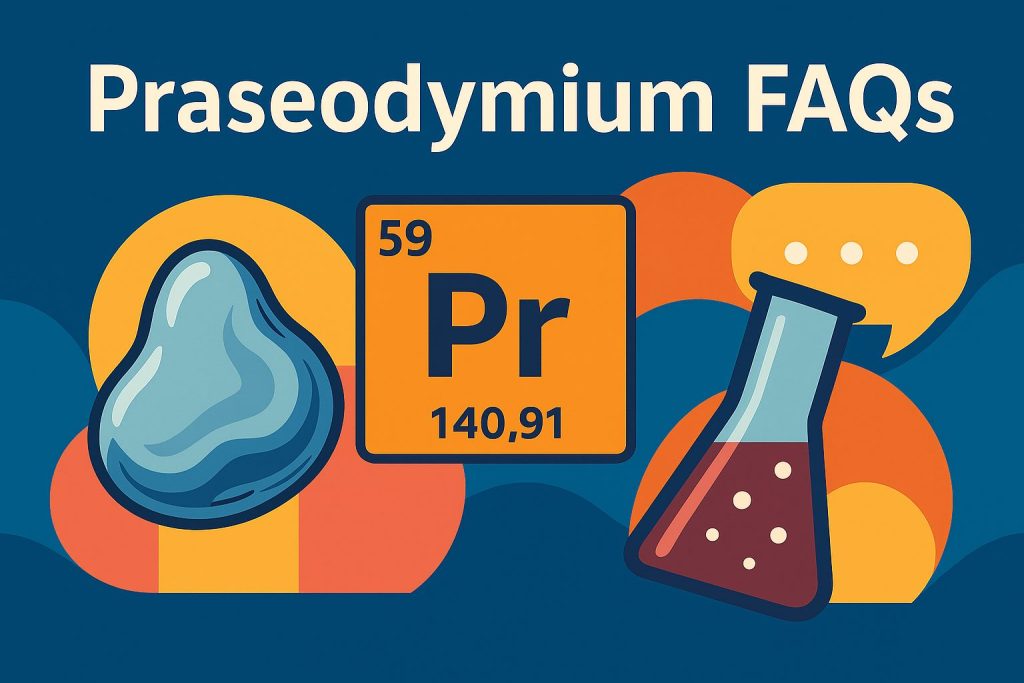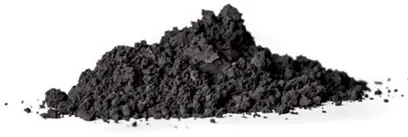The Legal Doping Agent of Industry — Stronger, Greener, Smarter

From powering aircraft turbines to enabling green energy tech, praseodymium is a metal that quietly elevates everything it touches.
Whether you’re a curious reader or a future-focused investor, this FAQ explores the rich world of praseodymium.
🔬 Properties & Physical Behavior
Yes, praseodymium is a rare earth metal from the lanthanide series of the periodic table. It’s silvery-white in its pure metallic form and typically appears as a dark brown or black powder in oxide form. It’s also paramagnetic and notably improves the properties of the materials it’s alloyed with.
In its pure metal form, praseodymium is bright and silvery. However, when oxidised, it quickly forms a greenish surface layer. As an oxide, it appears dark brown to black and is typically stored in powdered form for industrial use or investment purposes.
In highly specialised conditions, yes, sort of. Certain praseodymium-doped crystals have been used in quantum optics experiments to dramatically slow light pulses. But don’t expect to use praseodymium to build a time machine just yet. This effect is more of a scientific curiosity than a commercial application.
Praseodymium holds atomic number 59 and is symbolised as Pr. It sits right next to neodymium and cerium in the lanthanide series, a cluster of elements known for their unique electronic configurations and magnetic behaviours.
📖 History & Discovery
Praseodymium was discovered in 1885 by Austrian chemist Carl Auer von Welsbach, who separated it from didymium, a substance previously thought to be a single element.
Its discovery occurred in Austria, where von Welsbach succeeded in isolating it during his work on rare earth elements.
Carl Auer von Welsbach is credited with the discovery. His work also led to the separation of neodymium from the same mineral source, didymium.
🌍 Origin & Production
Praseodymium is typically found in monazite and bastnäsite ores, which also contain other rare earth elements. It is rarely mined in isolation due to the complexity of separation from other lanthanides.
The vast majority of global praseodymium production comes from China. However, there are growing efforts in countries like the USA, Australia, and Canada to develop rare earth mining projects that include praseodymium.
While the U.S. has some deposits, it currently relies heavily on imports. The Mountain Pass mine in California produces some praseodymium, but refining is still mostly done overseas, highlighting the strategic vulnerability of Western nations and why it’s on the U.S. critical minerals list.
⚙️ Uses & Applications
Praseodymium may not be a household name, but it’s everywhere; from high-strength magnets in your headphones to the coloured glass in your welding goggles. It helps improve the performance of metal alloys and strengthens aircraft turbine blades.
Its primary uses include:
– Permanent magnets (often alloyed with neodymium)
– Aircraft turbines
– UV-absorbing protective eyewear
– Colourants in glass and ceramics
– Solid oxide fuel cells and high-performance electronics
Because of its magnetic and alloy-enhancing properties, praseodymium plays a critical role in the green energy transition, high-speed transport, and next-gen electronics. It’s a metal that punches well above its weight.
Praseodymium’s price is driven by multiple factors:
– Growing demand from the magnet and aerospace industries.
– Limited global supply, dominated by a single country (China).
– Complex and costly extraction and refining processes.
– Rising importance in green tech, which is fuelling long-term scarcity concerns.
🧪 Safety & Handling
No, praseodymium is not radioactive. It is a stable element and does not emit radiation under normal conditions.sed around structural metals.
In its oxide form, typically used for industrial and investment purposes, praseodymium is stable and safe to handle under normal conditions. However, the pure metallic form, especially when finely powdered, can be highly reactive. Due to its large surface area, powdered praseodymium may ignite when exposed to heat or air, posing a fire risk. This is why it’s rarely handled outside controlled environments.
💼 Buying, Investing & Storage
Industrial-grade praseodymium isn’t something you’ll find on eBay. For tangible, investment-grade praseodymium in oxide form, it’s best to go through a specialist dealer. We offer certified, storage-ready praseodymium for private investors and industry, sourced directly from global producers.
At Strategic Metals Invest, you can purchase and physically own praseodymium as part of a tailored portfolio. You’ll receive industrial-quality oxide powder, a Certificate of Ownership, and the option for secure, tax-free storage in a high-security facility.
Praseodymium oxide is best stored in sealed containers, away from moisture and other oxidising agents. For serious investors, we recommend professional vault storage; fully insured, tamper-proof, and climate-controlled to maintain purity and maximise liquidity upon resale.
As technology accelerates, so too does the demand for the metals that power it. Praseodymium may be lesser known than gold or lithium, but its role is no less critical. From green energy to aerospace, it’s helping shape the infrastructure of the future. And with supply chain risks mounting, physically owning praseodymium might just be a smart way to future-proof your portfolio. Contact us for more information.


